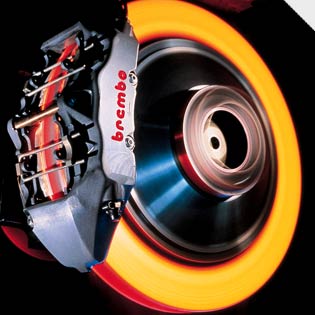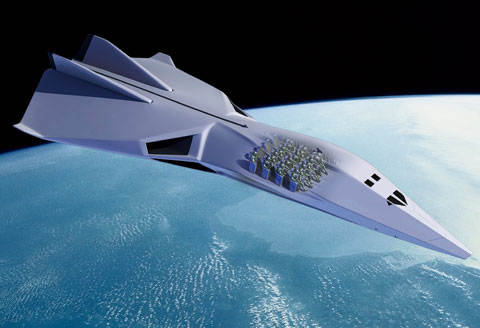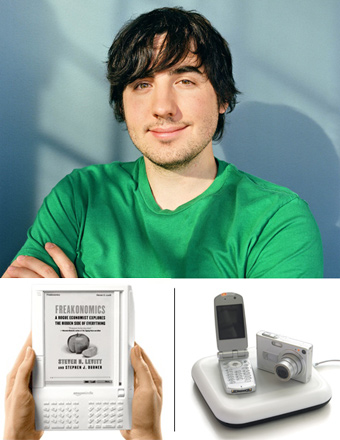The engine makes the airplane. An automobile, even a racecar, will run perfectly well with a variety of powerplants, configurations, horsepowers and displacements. But airplanes are different. They are simpler, purer vehicles than their ground-bound kin.
Each airplane has a mission, which dictates its configuration. And the configuration requires a source-of proper size and suitable weight-that delivers the right amount of absolutely, positively reliable power. Without a Pratt & Whitney JT9D, there would never have been a 747. Without a Rolls-Royce Olympus, no Concorde. Take away its Merlin and all you have is an Allison-powered A-36 Apache ground-attack light bomber, not the ultimate all-around fighter of World War II, the P-51 Mustang.
In the 1930s, Americans were building airliners and prototype heavy bombers and as a result became the masters of the round engine-the big air-cooled radials suited to heavy lifting. The Brits saw the storm clouds of war, and knew they would need fighter engines far better than the lumpish 500-horsepower radials and inlines that were then the norm. Contesting the Schneider Trophy for extreme racing seaplanes gave them excellent reason to begin developing huge 12-cylinder, liquid-cooled vee engines- ultimately the Merlin and, a few years later, the Griffon.
The Germans, meanwhile, were barred by the Versailles Treaty from building fighters. So in 1934, Willy Messerschmitt designed the world’s most advanced private plane, the Me-108-a 240-hp four-seat retractable that had capability, panache and performance not equaled until the vee-tail Beech Bonanza appeared after the war. Not surprisingly, the basic design would prove suitable for a far more powerful engine, and in 1935 the 108 was re-engineered to become the infamous Me-109, the fighter with which the Luftwaffe took on the RAF in the Battle of Britain.
Until very recently, the engine that powered this airplane was virtually extinct from Earth, even while thousands of World War II Pratt & Whitney, Wright, Allison and Rolls-Royce engines were still flying, driving everything from firebombers and
midnight freight dogs to collector warbirds. Of the tens of thousands of Daimler-Benz 600-series engines that powered the Me-109, all manufactured in the decade between 1935 and 1945*, only two remain operational, courtesy of the attention of a California engine restorer named Mike Nixon.
A peek inside a DB-601 gives a snapshot of German engineering sophistication. The DB-601 was fuel-injected, a German technology invented by Bosch for diesels, that the Brits and we knew little about. Our engines were all carbureted. When an Me-109 was too closely pursued by a Spitfire, the German pilot simply pushed over into a dive and thundered away while the diving Spit, also pulling negative Gs, unloaded its carburetor float, which flopped up and totally closed off the Merlin’s needle valves. For several long seconds, the Spitfire became a glider. (Jaguar was still using carburetors when Mercedes put fuel injection on its 300SL racecars in the mid-1950s.) Admittedly, a DB-601’s fuel-injection pump alone had about as many parts as the rest of the engine (the total number was still half that of the Brit’s) and had to be manufactured with the precision of a Leica. That’s the way German engineers like things.
“During the Battle of Britain, that engine was a year or so ahead of anything the British or Americans had,” says Nixon, “mainly because of the supercharger drive and the fuel injection.” Nixon probably knows more about the DB-601 engine than any other English-speaking person. Though his Tehachapi, California, company, Vintage V12s, specializes in Merlins and Griffons, he has now totally restored those two DBs, laboriously translating manuals, making tools and using several donor engines for some parts while manufacturing others.
Allied superchargers were all gear-driven directly off the crankshaft. Daimler-Benz developed an elegant hydraulic drive for the 601’s blower-essentially a miniature Dynaflow automatic transmission. And here’s another bit of ahead-of-its-time engineering sophistication: An altitude-sensing aneroid controller varied the supercharger’s speed so that all a Messerschmitt pilot had to do was firewall the throttle and dogfight. At least early in the war, American and British pilots had to carefully adjust the throttle as they climbed or descended to avoid overboosting the engine. “In the 109, you put the handle all the way up. It was a point-and-shoot airplane,” says Nixon. “And the DB-601 is a very compact design. The focus was on using a minimal amount of metal for the greatest amount of torque.”
Nixon notes that the German engine was full of inventive and interesting systems. The magneto timing was controlled by oil pressure, for example, and there was a lever in the cockpit actually labeled “sparkplug cleaner.” If a 109 pilot had been cruising at low power and suddenly found himself with oil-fouled plugs as the P-51s showed up, he was able to retard the magnetos with that lever. “The combustion chambers would suddenly generate a whole lot of heat and burn the plugs clean,” says Nixon. “Then you could go back to full power.”
Of course, the Germans lost the Battle of Britain, but in the end they were defeated not because their pilots were less skilled or the airplanes inferior. Luftwaffe pilots had some distinct advantages: They had been training assiduously as glider and aerobatic jocks-activities that weren’t forbidden-and some had even flown in the Spanish Civil War. The RAF had to hurriedly snatch many of its novices from university flying clubs, a rather less formidable training ground. And it wasn’t that the 109s couldn’t handle the British Spitfires: The Messerschmitts fought at a great disadvantage, having to fly all the way from France or even Germany and arriving over hostile turf with, typically, 5 or 10 minutes’ worth of gas to expend on dogfighting. The RAF fighters flew within range of their own airfields, and if pilots were lucky they could parachute to safety even if their airplanes didn’t make it. Arguably, the Germans were within days of wiping out Britain’s defenders when Hitler decided to concentrate entirely on bombing London-the Blitz-rather than destroying the RAF.
Nixon’s first rebuild is the only early-model Daimler-Benz V12 flying anywhere in the world, but it will soon be joined by the second, both of them in totally restored Me-109E’s. Which means that this exotic, short-lived powerplant, the ingenious machine behind one of the most fearsome weapons of World War II, is perhaps the rarest production piston engine you’ll ever hear-hear being a critical word.
If someday you’re at an air show where one of Nixon’s engines is cranked up and flown, it’ll sound something like “a stone crusher,” as one ex-Messerschmitt pilot put it to English writer Michael Jerram. Jerram has himself heard a DB-601 in flight and describes it as “a rasping growl combined with the whistle of its hydraulic supercharger.” (The airplane Jerram happened to hear crashed in 1997, at the unfortunate end of its very last flight before being consigned to an RAF museum.)
One of Nixon’s meticulous restorations will soon end up in the hands of billionaire Microsoft cofounder and warbird collector Paul Allen (it currently resides in England). That means the sky over Seattle may one day be filled with the rumble of an engine that once helped to bring Britain almost to its knees. Beneath the wings of Allen’s Messerschmitt will lie the vast factories of a company called Boeing, which once made thousands of B-17 Flying Fortresses, each of them powered by four magnificent Wright Cyclone nine-cylinder radials.
Now there was an engine that made an airplane. And demonstrably did an even better job of it.
*Note: Rivet counters will wail that only later Messerschmitt-designed airplanes could be Me’s, and that the 109 was properly a Bf-109, having been manufactured not by Messerschmitt himself but by the Bayerische Flugzeugwerke. Ja.







